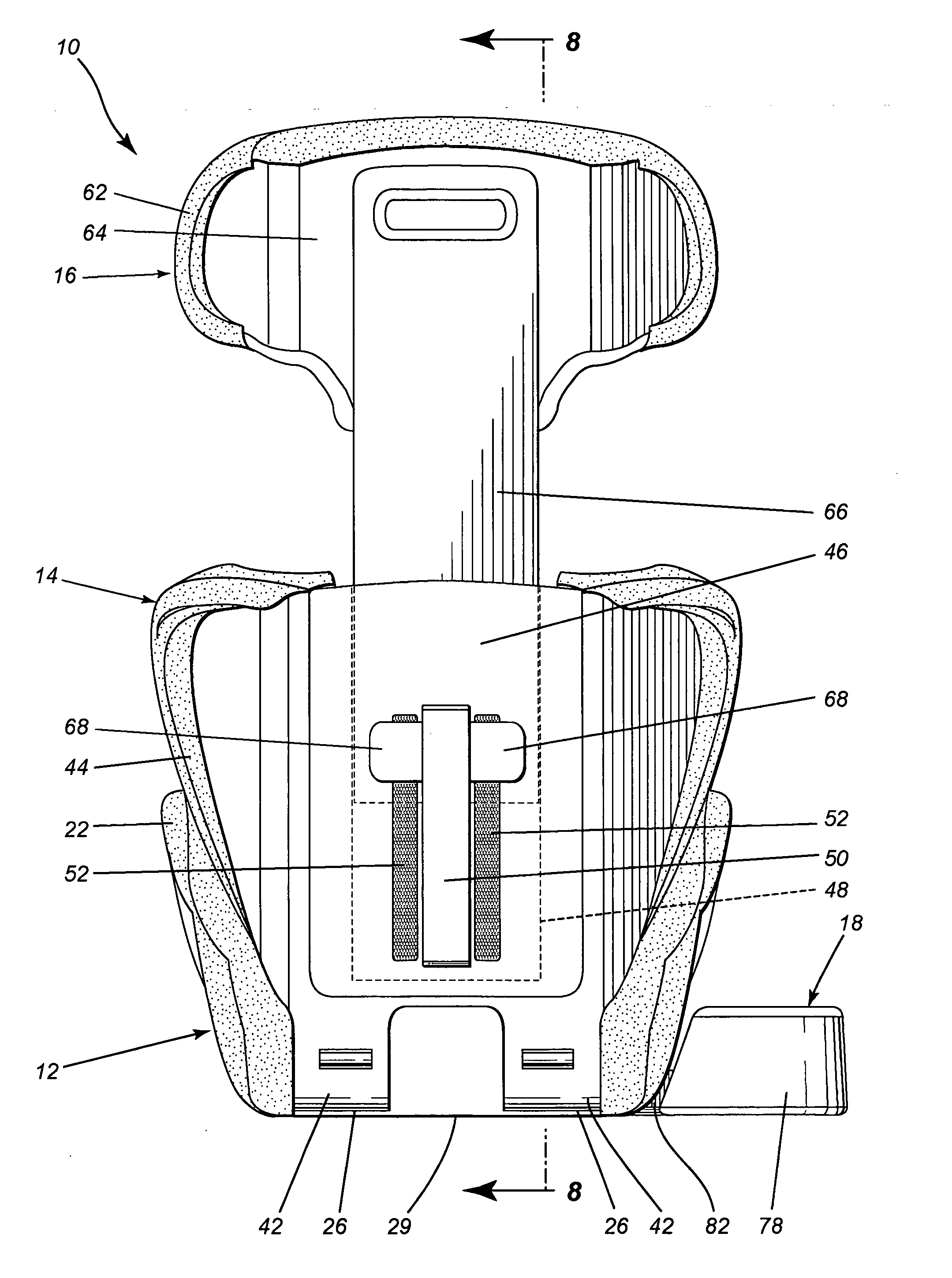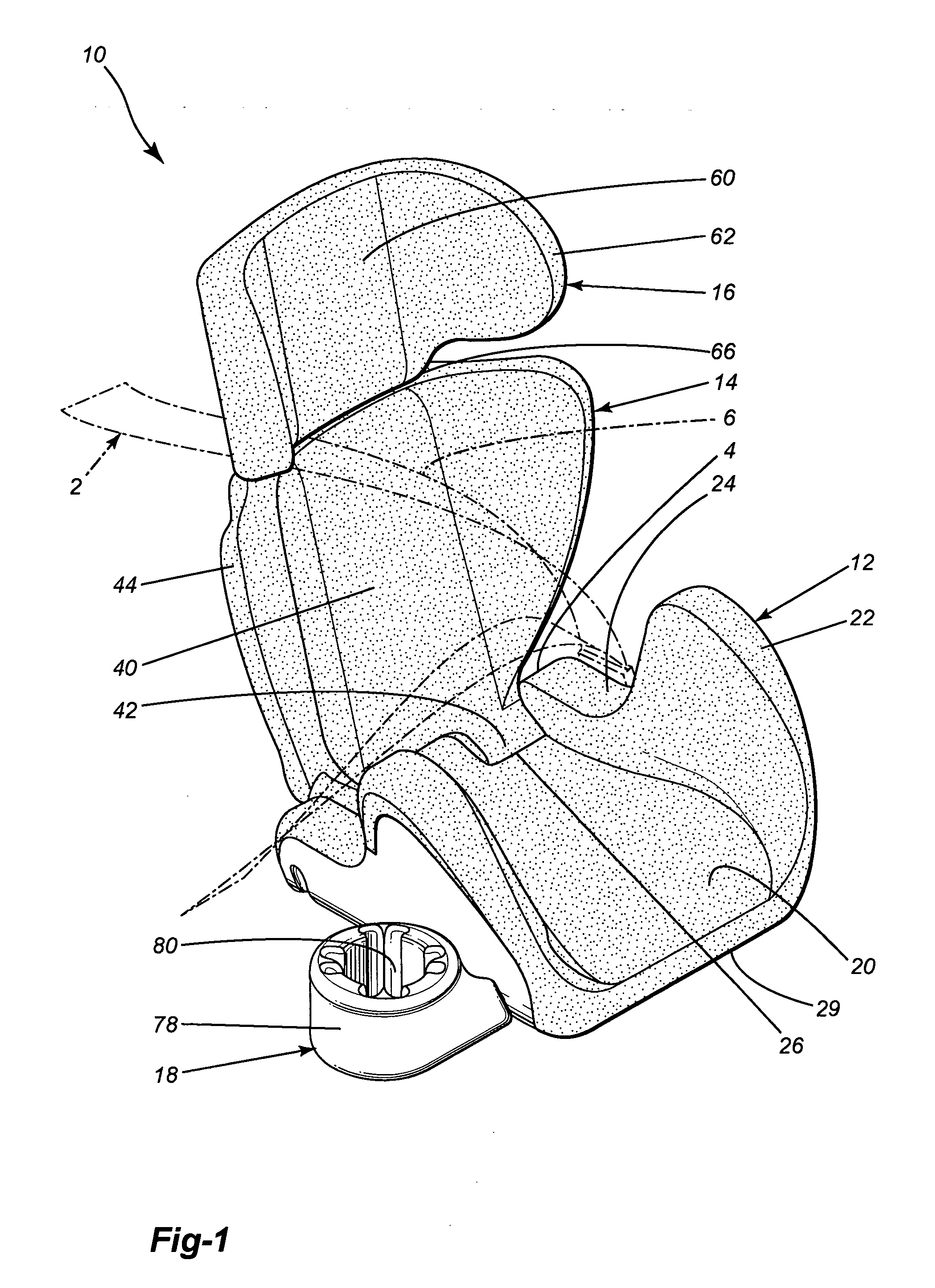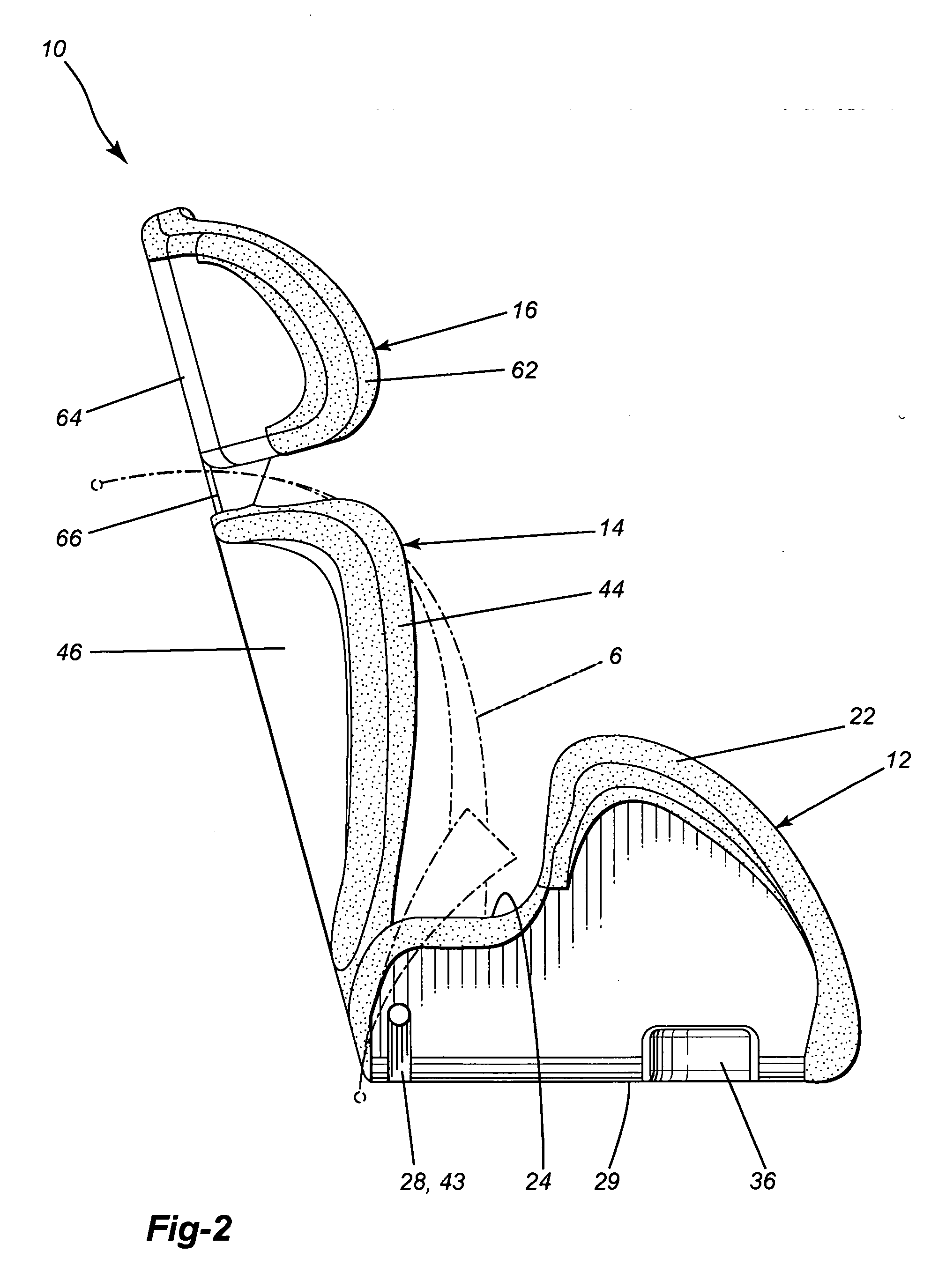Child booster seat
a booster seat and child technology, applied in the field of child restraint systems, can solve the problems of inability to adjust to allow a better fit, increase the risk of injury, and increase the amount of packaging and space required, so as to facilitate storage, reduce the risk of injury, and maintain the child comfortably and effectively.
- Summary
- Abstract
- Description
- Claims
- Application Information
AI Technical Summary
Benefits of technology
Problems solved by technology
Method used
Image
Examples
Embodiment Construction
[0021] Referring now to the drawings, a preferred embodiment of a child booster seat generally indicated at 10 comprises a seat portion 12, a back portion 14, a headrest 16 and a cup holder 18. The child booster seat 10 is designed so that the seat 10 and a child seating therein are restrained on a vehicle seat by a seat belt 2 integral with the vehicle and the vehicle seat. The child booster seat 10 is designed to accommodate children generally between 3 and 12 years old, with a maximum weight capacity of 100 pounds and a maximum height of 60 inches tall.
[0022] As can be best seen in FIGS. 1 and 2, the seat portion 12 includes a seating surface 20 which is slightly curved so as to provide comfortable seating. A pair of armrests 22 extends vertically from the seating surface 20. Each armrest 22 includes a groove 24 adjacent to the back portion 14 of the seat 10 which is designed to receive a lap portion 4 of the seat belt 2. A rear end of the seat portion 12 preferably includes two...
PUM
 Login to View More
Login to View More Abstract
Description
Claims
Application Information
 Login to View More
Login to View More - R&D
- Intellectual Property
- Life Sciences
- Materials
- Tech Scout
- Unparalleled Data Quality
- Higher Quality Content
- 60% Fewer Hallucinations
Browse by: Latest US Patents, China's latest patents, Technical Efficacy Thesaurus, Application Domain, Technology Topic, Popular Technical Reports.
© 2025 PatSnap. All rights reserved.Legal|Privacy policy|Modern Slavery Act Transparency Statement|Sitemap|About US| Contact US: help@patsnap.com



